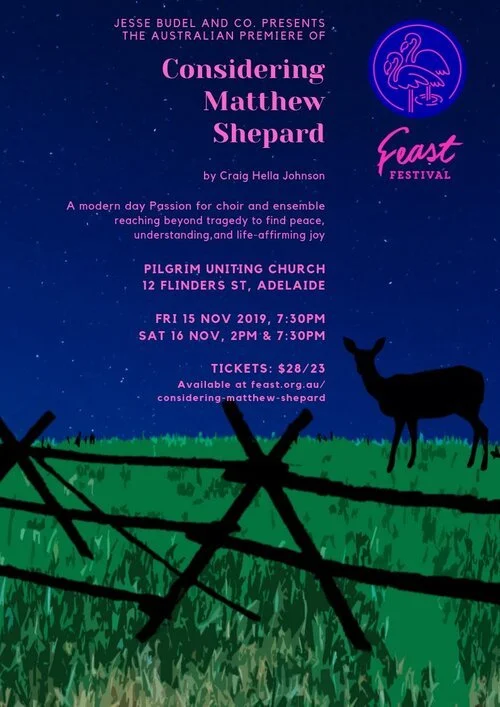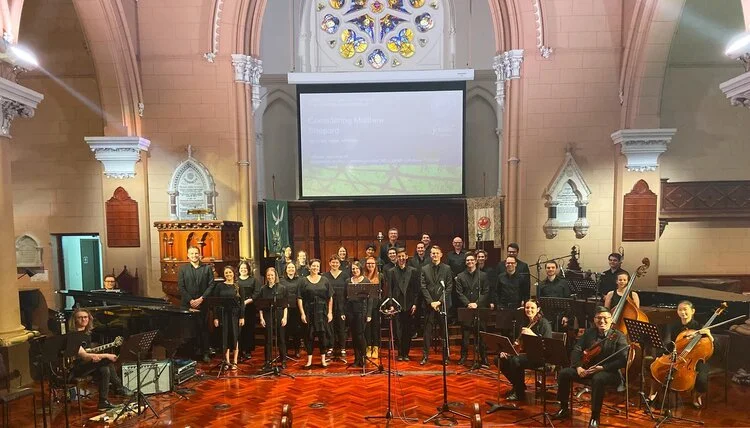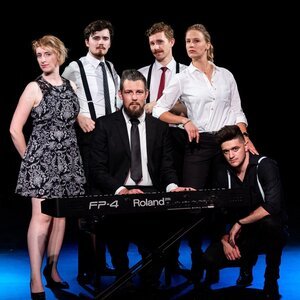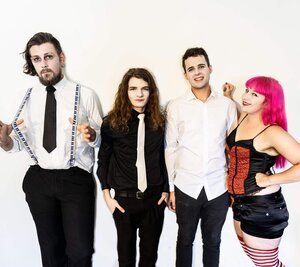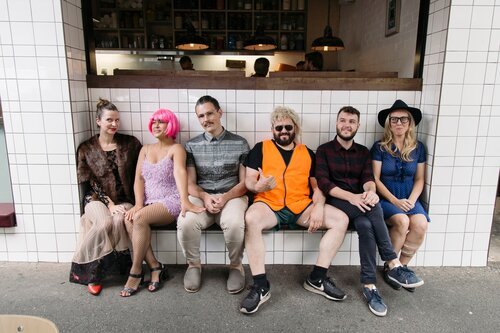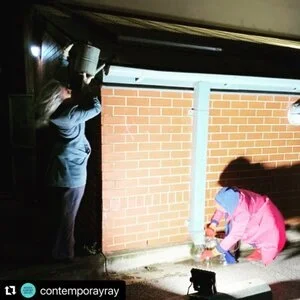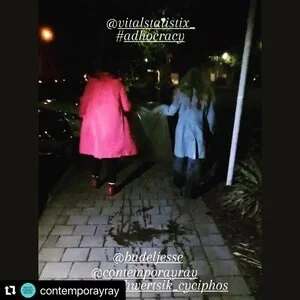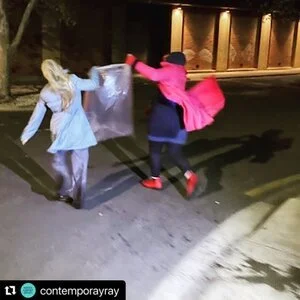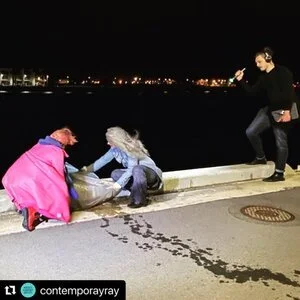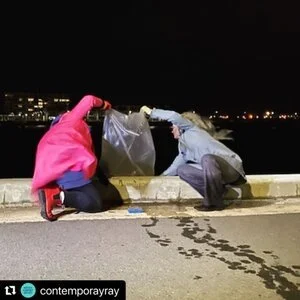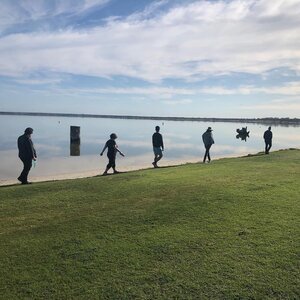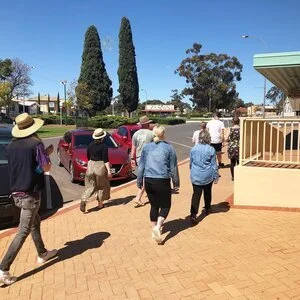A 2020 Review
Hi everyone,
It’s been a year since my last major update here, a year that has turned out quite differently than anticipated. Recalling the approach to 2020, a numerically-rounded year that augured a sense of auspiciousness, it seemed that most of us looked forward to the year ahead, peripherally heeding concerns of a novel coronavirus via world news outlets.
For my own circumstances, I count myself fortunate to live in South Australia, a region of the world that has fared incredibly well in managing its COVID-19 response, allowing the privilege of living with comparable few restrictions these past several months, and opportunity to collaborate and experience new work in person, as below:
Late 2019
I start by returning briefly to 2019. In October, I was fortunate to partake in a three-week residency at the Sir Robert Helpmann Theatre in Mount Gambier. For this, I developed a new work called Strata, which involved multiple live streams of soundscapes from the Naracoorte Caves National Park system (subterranean, ground level, and tree canopy) streamed through to a speaker array in the Theatre’s courtyard (with speakers situated at ground, mezzanine and roof levels). I’ve written a separate post detailing the process of the Residency, which you can read here.
In tandem the residency, I also participated in the Land Arts Retreat in November, a 10 day program involving 10 artists from around the country . Like the residency, I have also written about my experiences on the retreat, which you can read here.
The Strata installation equipment at Mt Gambier’s Sir Robert Helpmann Theatre.
In November, as part of Adelaide’s annual LGBTIQA+ Feast Festival, I had the privilege to produce and conduct the Australian premiere of Considering Matthew Shepard, a passion oratorio by American composer Craig Hella Johnson. Originally written for Johnson’s Austin-based choir, Conspirare, the 110 minute work recounts the story of Matthew Shepard, a 21-year-old gay college student who was brutally beaten and left to die on a fence in Laramie, Wyoming in 1998. Working alongside 34 incredible South Australian musicians—both queer-identifying and allies—was an incredibly meaningful and rewarding experience, wherein each of us developed personal connections with Matthew’s story, Johnson’s music and the resonances of similar occurrences on our own shores (not least of which include George Duncan’s 1972 murder on University Bridge in Adelaide, and the notorious 1980s bashings in Sydney). As Ewart Shaw’s review generously summarises:
That Budel's hand-picked choir of twenty voices learned this mighty score across four, obviously, very intense rehearsals is just incredible… Every solo, every small ensemble, was delivered with love and intense communicative musicality and sincerity.
It's easy to throw around words like 'tragedy', 'masterpiece', 'success', and 'triumph', but what marks this out as such an amazing work, and an equally astounding performance, is the humility and joy that, like the work of Bach, has flourished from sacrifice.
Jesse Budel brought this work together. His confident direction of his forces, communicative gestures, and command were impressive and easily legible. He should be encouraged and supported to bring his team back together and repeat this significant work outside the context of the Feast Festival.
On this last point, I am exploring options to remount CMS again in the future, hopefully with some further news soon.`
the CMS poster
The performers of Considering Matthew Shepard in Pilgrim Uniting Church, Adelaide (photo by Jakub Gaudasinski)
Early 2020
Beginning the bewildering year that has been 2020, I was involved in Adelaide Youth Theatre’s production of Seussical as co-director and co-musical director alongside Serena Martino-Wiliiams and choreographer Nina Ritchie. As a show that is close to my heart (the lead role of Horton the Elephant was my first major role in Murray Bridge Players and Singers’ 2011 production), it was a joy to be able to engage with the show from a different vantage point, this time at the conductor’s podium. The reviews from Glam Adelaide, Theatre Travels, Adelaide Theatre Guide and Theatre Association of South Australia were rather glowing, and I’m ever invigorated by the work that AYT’s young casts and somewhat-more-mature crews invest in their productions.
Conducting the Seussical orchestra backstage at the Arts Theatre, Adelaide. Photo by Emma Riggs.
Hence followed a very involved Adelaide Fringe Festival seasons, wherein I was involved in four (4!) separate projects:
Providing piano accompaniment for Vicarious Cabaret, a fully improvised musical with Mitre Khammash, Elja Parsons, Kirsty Wigg, Ryan O’Dea and Nick Munday, best summed up as follows:
Each show, we take inspiration from the stories you tell us and use them to perform an entirely new Musical, on the spot! Songs and all. Watch a brand new musical LIVE and DIE right before your eyes"!”
We’ll be performing again this coming Fringe 2021, so check your Fringe Guide in due course for more details!
Contribution of a work, ‘Sussurations’ to the eco-arts exhibition series, Solastalgia. This incarnation, ‘Solastalgia - an antidote’, showed at Fabrik Arts and Heritage in Lobethal, with works responding to the recent bush fires in the local area by Belinda Broughton, Liz Butler, Deb Cantrill, Louise Feneley, Gaynor Hartvigsen, Melissa Hellwig, Heidi Kenyon, Aaron Poole, Evette Sunset, Laura Wills and curator Jo Wilmot. Belinda Broughton, one of the contributing artists who lost her home was featured in the German Monopol magazine, talking about her experiences and associated creative work. Many thanks to Jo and Evette for their support and guidance throughout the development of the work.
Playing keys for Ukulele Dream Girl does Amanda Palmer, alongside the Ukulele Dream Girl herself, Phi Theodorous, and friends Patrick Maher (guitar) and Brodie Hewitson (drums). Covering a small portion of singer-songwriter Amanda Palmer’s cornucopic oeuvre, we were grateful to receive five-star reviews from The Advertiser and Weekend Notes!
Playing Wolfgang, an ex-pat German hipster in Tamara Linke’s The Hipster at Little Bang Brewery, alongside a wonderful cast including Jared Frost, Anthony Leppa, Jennifer Trijo, Rachel McCall and Tamara herself. Directed by Catherine Campbell, with musical direction from Alex Wignall, we had an absolute hoot at the Little Bang Brewery in Stepney, with some nice reviews from The Adelaide Show, Stage Whispers and Tulpa Magazine.
Left to right, 1) Vicarious Cabaret (photo by Jack Parker); 2) ‘Sussurations’ for Solastalgia (photo by Sam Oster); 3) Ukulele Dream Girl Does Amanda Palmer (photo by Charlotte Kirby) ; 4) The Hipster cast out and about near Adelaide
Then, on the penultimate night of The Hipster, our last two shows were cancelled, given the uncertainty of COVID-19 in mid-March 2020. A slew of other projects began to be scrapped or rescheduled: a conference on Melbourne in late March, a May production of Jonathan Larson’s Tick Tick Boom! (in which I was to play Jon) with Hills Musical Company, and Priscilla: Queen Of The Desert with Matt Byrne Media postponed until 2022. Working in academia (teaching music theory to a variety of cohorts at Elder Conservatorium, including musical theatre and popular music students) also entailed drastic changes, with all teaching shifting to online delivery and classes conducted at a remove via Zoom.
Without wanting to disregard the massive impact that the pandemic lockdown has had for folks the world over—medically, financially, socially, psychologically—for myself, the lockdown provided a much-needed opportunity to take a post-PhD break that I’d not allowed myself in 2019. For a couple months in the beginning, aside from teaching, I took a much-needed period of rest, allowing myself to recuperate energies and interests that had been neglected since PhD submission.
Emerging from a hibernatory period around May, more remote projects took place unabated. Amongst these was building a new website for the Solastalgia exhibition series (that I was a part of earlier in the year) alongside curator Jo Wilmot, cataloguing the four exhibitions featured since 2017 in Gray Street Studios (Adelaide), Murray Bridge, Goolwa and Lobethal. Later, in September, this list added an online exhibition, ‘Solastalgia in the time of COVID’, featuring works by South Australian artists responding to experiences of their environments in the pandemic.
In June, I began my tenure as Secretary for the World Forum for Acoustic Ecology (WFAE), an immense privilege in having the opportunity to serve on the executive of the peak body in my research field. Working alongside President Eric Leonardson, Vice-President Leah Barclay, Treasurer Eric Powell and a board consisting of representatives from affiliate organisations around the globe, I’m excited to assist in facilitating new projects and happenings in the fields of acoustic ecology and ecoacoustics.
Latter 2020
As restrictions gradually lifted in South Australia in late June, opportunities to restart ongoing projects as well work on new ventures.
In July, the exhibition program for Featherstone Sound Space, a surround sound exhibition site in Adelaide’s CBD (that I curate) was able to resume. Following the previous year’s exhibition of works by Jason Sweeney and Tristan Louth Robins, 2020’s focus was on four new commissions supported by Arts SA (DPC) project funding. Starting with Christopher William’s Birds of a Feather earlier this year, the program was put on hiatus until pedestrian activity had returned to the Rundle Mall precinct. Kicking off the new period was Louis Bullock’s Streams Of Encouragement/Value Streams, followed by Leah Blankendaal’s Skin Systems and later Keira Simmon’s The Pattern Of Our Days. More information on each of the works and the exhibition space can be found here.
Keira Simmons at Featherstone Sound Space, with The Pattern Of Our Days exhibiting.
Photo by Jesse Budel.
In August, I contributed a work, ‘Rollophony’, as part of the SALALA Land exhibition at ARTHUR Art Bar on Currie Street, alongside a wide range of artists, co-coordinated by artists Ray Harris and Cynthia Schwertsik.
In September, I collaborated further with Ray and Cynthia on Das Wasser Im Bade, as part of Vitalstatistix’s ADHOCRACY 2020. An annual hothouse for creative development hosted in Port Adelaide, ADHOCRACY recalibrated this year to accommodate a much broader array of projects (28 compared to the typical 10), releasing 7 online outcomes every Friday of September, accompanied by in-person showcases for those at home in Adelaide.
The collaboration on Das Wasser Im Bade was quite the immersive journey. Derived from our working title, Das Kind mit dem Bade auschutten (a German translation of the expression, ‘throwing the baby out with the bathwater’), the project considers the journey of water from the domestic, to the communal, to the environmental. As explained in our artist blurb:
Das Wasser im Bade is an experimental exploration of commodified use of water in our daily lives, through sound, video and performance works made from the mundane to the sublime in suburban waterways.
Through observations of visible and invisible urban water ways, this project centres on the use and dependence of water within a deep concern for the environment and our place within it. We extend into a consciousness of the relationship of human impact on the environment as a consequence of our actions, Das Wasser im Bade dives into water on the fringes of our comfort zones and explores entropy in absurd attempts to hold on to water.
In the search for the perfect bath, Jesse’s soundscape captures the tactile nature of being submerged in various bodies of water from the domestic to man-made and natural reservoirs. While Ray and Cynthia move with and against the flow of water in relation to the body. After all, throwing the baby out with the bathwater alludes to the commodified relationship contemporary culture has to water – as we expect clean aqua through pipes and taps and to odourlessly and swiftly escape through drains. Domesticated water is insisted, when and where we want it for our comfort zone and recreational needs. We take it for granted that we have ample supply without much contemplation, even while living in a drought beaten country.
the film version of Das Wasser Im Bade, developed as part of ADHOCRACY 2020
While Ray and Cynthia focussed on the video element — replete with quirky-cum-insightful juxtapositions between the personal and the environmental, and the clumsy micromanagement of water betwixt a variety of household receptacles — my own work traced the journey of water outlined above (domestic-communal-environmental). For this, I recorded at home in my bathroom, making multiple takes of taps dripping and baths and basins filling and draining, and from their increased the scale of the bodies of water, make takes at the River Torrens, St Peter’s Billabong, Kirkcaldy Reserve in Grange, and the waters of Port Adelaide River from Cruikshank’s Beach at Birkenhead. These were then organised in a sequential fashion from the hyperlocal to the broader environment, aiming at conveying the cumulative effects of distinctive acts of water use in wider social and ecological spaces. Combining the visuals and audio together, our film (above) dropped on Friday September 11.
Then on Friday September 25, we took attendees of that night’s gathering at Vitalstatistix on a performance/audio tour of the Port, reusing the film’s soundscape as accompaniment to Ray and Cynthia’s exploration of gutters, drains, pipes and waterways in the area.
Given that ADHOCRACY operates as a seed-funding platform for projects in development, Ray, Cynthia and I have been keen to explore further avenues of development for the work. In October, fellow composer Dylan Crismani approached me to write a new piece for an upcoming Soundstream: Adelaide New Music concert, EMERGE. On offer was the opportunity to write for the cristal baschet, an instrument developed by the French Baschet brothers in 1952 which is played through stroking glass rods with wet fingers, sounding pitches based on the lengths of connected metal rods and beams. Whereas most cristal baschets are tuned to concert pitch and produce their sound acoustically (through resonator horns), Dylan built his instruments for ease of touring by amplifying with contact microphones, and tuned them to a system of his own derivation (his fascinating PhD thesis focussed on microtonal tuning systems).
Writing new parts for cristal baschet and prepared piano (utilising blu-tak on a wide pitch range of the instrument to mute the attack), I aimed at producing a complementary accompaniment to the original soundscape, largely drawing pitch material and rhythmic activity from spectral analyses of the original track. Surprisingly, the outer sections of the soundscape’s harmonic spectrum outlined the same pitch material as used by Ravel in the opening his ‘Une Barque Sur L’Ocean’ (from Miroirs), providing a fitting musical quote given the aquatic theme and boat activity featured in the larger bodies of water recorded.
A Limelight Magazine review by Chris Reid summarises the concert version as follows:
Jesse Budel’s [Das] Wasser Im Bade (The Water in the Bath) combined the sound of a prepared piano (played by Budel) and a microtonally tuned cristal baschet (developed and played by Dylan Crismani) with a video of a work for performance artists Cynthia Schwertsik and Ray Harris.
A cristal baschet comprises a set of tuned glass rods that the performer, with moistened fingers, strokes to produce a ringing sound similar to that created by stroking the moistened rim of a wine glass, but it has a much wider range of pitches. The typical cristal baschet has metal horns attached to it to amplify the sound but this instrument was instead amplified through the PA. The prepared piano and cristal baschet made sounds reminiscent of water trickling and dripping to accompany the action on the video screen in which Schwertsik and Harris play with water – pouring it to and from jugs, throwing it at each other and trying to catch it, tipping it into each other’s raincoat pockets and ultimately spilling it. One sequence showed various containers lying in a puddle suggesting a garbage-filled stream.
Budel is especially concerned in his music with environmental degradation, and despite the apparent playfulness of the video, we were given a stark reminder of our misuse of water.
A recording of the performance made on Nov 1 at the University of Adelaide’s Madley Rehearsal Space is forthcoming.
Dylan Crismani (on cristal baschets) and myself (on piano) performing Das Wasser Im Bade at Soundstream’s EMERGE concert, 1 Nov.
Lastly, returning to October, I had the joy of conducting a couple of soundwalks as in Barmera in collaboration with Part Of Things, an ideas hubs and gathering space run by the remarkable team, Alysha Herrmann and Nic Tubb. Conducted as part of Mental Health Week, the sound walks (pictured, photos by Alysha Herrmann) allowed lots of insightful observations made by our sound walkers listening to the acoustic environments of Barmera and Lake Bonney.
Until next time (far sooner than the last), stay safe and be well,
Jesse

